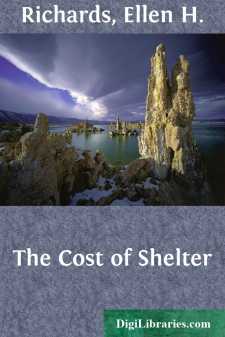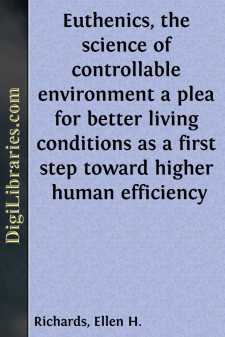Categories
- Antiques & Collectibles 13
- Architecture 36
- Art 48
- Bibles 22
- Biography & Autobiography 813
- Body, Mind & Spirit 142
- Business & Economics 28
- Children's Books 14
- Children's Fiction 11
- Computers 4
- Cooking 94
- Crafts & Hobbies 4
- Drama 346
- Education 46
- Family & Relationships 57
- Fiction 11828
- Games 19
- Gardening 17
- Health & Fitness 34
- History 1377
- House & Home 1
- Humor 147
- Juvenile Fiction 1873
- Juvenile Nonfiction 202
- Language Arts & Disciplines 88
- Law 16
- Literary Collections 686
- Literary Criticism 179
- Mathematics 13
- Medical 41
- Music 40
- Nature 179
- Non-Classifiable 1768
- Performing Arts 7
- Periodicals 1453
- Philosophy 64
- Photography 2
- Poetry 896
- Political Science 203
- Psychology 42
- Reference 154
- Religion 513
- Science 126
- Self-Help 84
- Social Science 81
- Sports & Recreation 34
- Study Aids 3
- Technology & Engineering 59
- Transportation 23
- Travel 463
- True Crime 29
The Cost of Shelter
Description:
Excerpt
CHAPTER I.
THE HOUSE AND WHAT IT SIGNIFIES IN FAMILY LIFE; TYPIFIED IN PIONEER AND COLONIAL HOMES, THE CENTERS OF INDUSTRY AND HOSPITALITY.
"There is no noble life without a noble aim."
—CHARLES DOLE.
The word Home to the Anglo-Saxon race calls to mind some definite house as the family abiding-place. Around it cluster the memories of childhood, the aspirations of youth, the sorrows of middle life.
The most potent spell the nineteenth century cast on its youth was the yearning for a home of their own, not a piece of their father's. The spirit of the age working in the minds of men led them ever westward to conquer for themselves a homestead, forced them to go, leaving the aged behind, and the graves of the weak on the way.
There must be a strong race principle behind a movement of such magnitude, with such momentous consequences. Elbow room, space, and isolation to give free play to individual preference, characterized pioneer days. The cord that bound the whole was love of home,—one's own home,—even if tinged with impatience of the restraints it imposed, for home and house do imply a certain restraint in individual wishes. And here, perhaps, is the greatest significance of the family house. It cannot perfectly suit all members in its details, but in its great office, that of shelter and privacy—ownership—the house of the nineteenth century stands supreme. No other age ever provided so many houses for single families. It stands between the community houses of primitive times and the hives of the modern city tenements.
As sociologically defined, the family means a common house—common, that is, to the family, but excluding all else. This exclusiveness is foreshadowed in the habits of the majority of animals, each pair preempting a particular log or burrow or tree in which to rear its young, to which it retreats for safety from enemies. Primitive man first borrowed the skins of animals and their burrowing habits. The space under fallen trees covered with moss and twigs grew into the hut covered with bark or sod. The skins permitted the portable tent.
It is indeed a far cry from these rude defences against wind and weather to the dwelling-houses of the well-to-do family in any country to-day, but the need of the race is just the same: protection, safety from danger, a shield for the young child, a place where it can grow normally in peaceful quiet. It behooves the community to inquire whether the houses of to-day are fulfilling the primary purposes of the race in the midst of the various other uses to which modern man is putting them.
As already shown, shelter in its first derivation, as well as in its common use, signifies protection from the weather. Bodily warmth saves food, therefore is an economy in living. From the first it also implied protection from enemies, a safe retreat from attack and a refuge when wounded. But above all else it has, through the ages, stood for a safe and retired place for the bringing up of the young of the species.
The colonial houses of New England with large living-room, dominated by the huge fireplace with its outfit of cooking utensils, with groups of buildings for different uses clustered about them, giving protection to the varied industries of the homestead, illustrate the most perfect type of family life....



